Franklin D. Roosevelt Presidential Library and Museum
Introduction
Author-Uploaded Audio
Audio by Holley Snaith
Text-to-speech Audio
Images
The floor mural at the Henry Wallace Visitor Center that depicts the Roosevelt Estate and other landmarks in Hyde Park
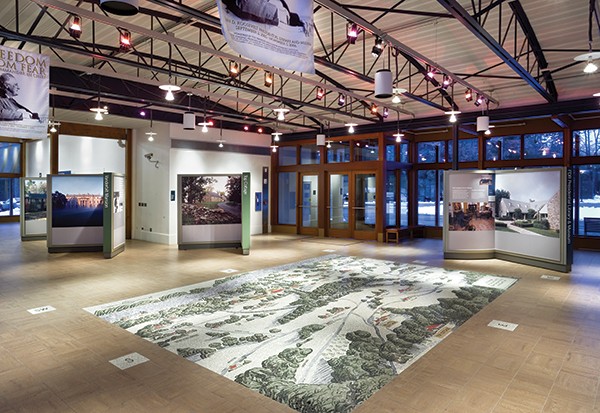
FDR speaking at the dedication of his presidential library, June 30, 1941
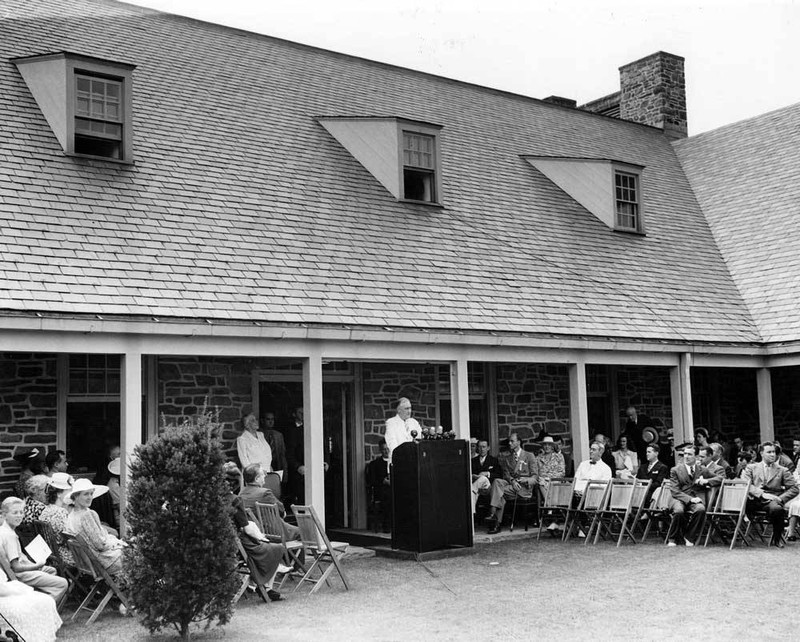
Eleanor Roosevelt gives Soviet Premier Nikita Khrushchev and his wife Nina a tour of the FDR Library, September 18, 1959
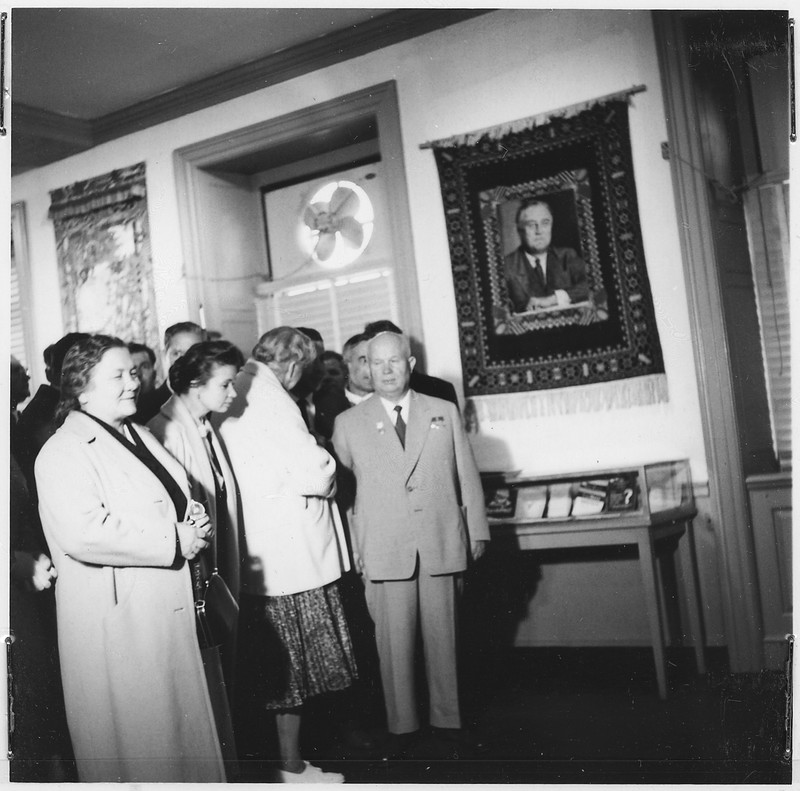
The front entrance of the FDR Library
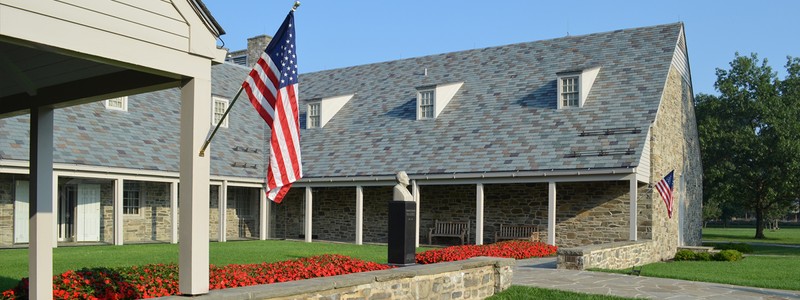
Life size statue of FDR and Eleanor Roosevelt at the Henry Wallace Visitor Center, modeled after an August 1933 photograph of the Roosevelts in Hyde Park
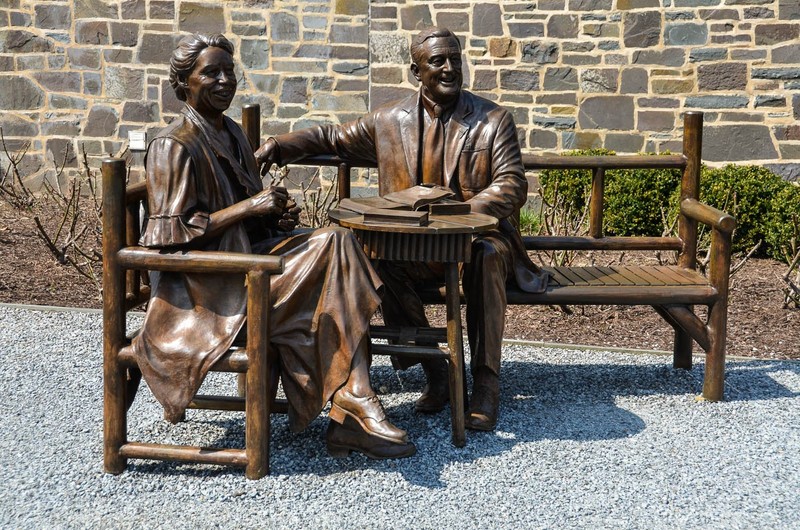
Backstory and Context
Author-Uploaded Audio
Audio by Holley Snaith
Text-to-speech Audio
Franklin D. Roosevelt created the presidential libraries system in 1939 when he made the decision to donate his personal and presidential papers to the government. Prior to this, presidential papers had been scattered, many were left to estates, others to the Library of Congress, and countless others lost. As an avid historian, FDR stated that future historians would find it beneficial and convenient for all of his papers to be in one location, and there was no place better for that than his hometown of Hyde Park. The National Archives and Records Administration, established in 1934, would be custodians of the papers and archival items.
Once he officially deeded part of his family's property to the government for the building of the presidential library, a group of the president's friends formed a nonprofit to raise money to build the library and museum. As early as 1937, FDR was already sketching out his plans of what the library should look like. Wanting to build in the Dutch Colonial style that is common around the Hudson Valley, FDR chose architect Henry Toombs to consult with and hired Louis Simon as principal architect. In the fall of 1939, FDR, accompanied by Eleanor Roosevelt, laid the first cornerstone. In July 1940, the Library, almost complete, was transferred from Franklin D. Roosevelt Library Inc. to NARA.
On the afternoon of June 30, 1941, FDR dedicated his presidential library that had been four years in the making. It was a simple ceremony with Hyde Park locals in attendance along with FDR, Eleanor, and Sara Roosevelt. With the war in Europe raging and the United States a few months away from entering, FDR said the library was proof "that our confidence in the future of democracy has not diminished in this Nation and will not diminish."
Original exhibits displayed FDR's large collection of model ships, his stamps, items from his childhood, and gifts received by he and Eleanor during the presidency. Now the exhibits are more elaborate and educational, exploring the life and times of both Roosevelts, the New Deal, World War II, Eleanor's life after her husband's death, and even his little dog, Fala.
In the original sketching of the library, FDR made the provision that once his wife passed away a new wing would be added to house her archival materials. A few months after her death in November 1962, plans moved forward to construct the Eleanor Roosevelt wings but it would be another 10 years before they were dedicated. In 2010 the Library closed for three years to undergo its first major renovation in nearly 70 years. The $35 million dollar renovation updated the exhibits, bringing them up to NARA's standards, and installed handicap accessible ramps throughout the property.
Though the interior exhibits have changed since 1941, the exterior that FDR took such pride and consideration in has remained unchanged. When FDR dedicated his library in 1941 and some 2,000 visitors trickled in the first day, it was his hope that other presidents would follow. FDR did set a precedent, as each president since has established a presidential library. In 1955 the Presidential Libraries Act was signed into law and in 1978 the Presidential Records Act, making all president's papers public property. It all began with Franklin Roosevelt's vision and appreciation for history.
Sources
Presidential Library History. National Archives. Accessed June 01, 2018. https://www.archives.gov/presidential-libraries/about/history.html.
Architectural Chronology. FDR Presidential Library & Museum. Accessed June 01, 2018. https://fdrlibrary.org/architectural-chronology.
Dedication. FDR Presidential Library & Museum. Accessed June 02, 2018. https://fdrlibrary.org/dedication.
Library History. FDR Presidential Library & Museum. Accessed June 02, 2018. https://fdrlibrary.org/library-history.
